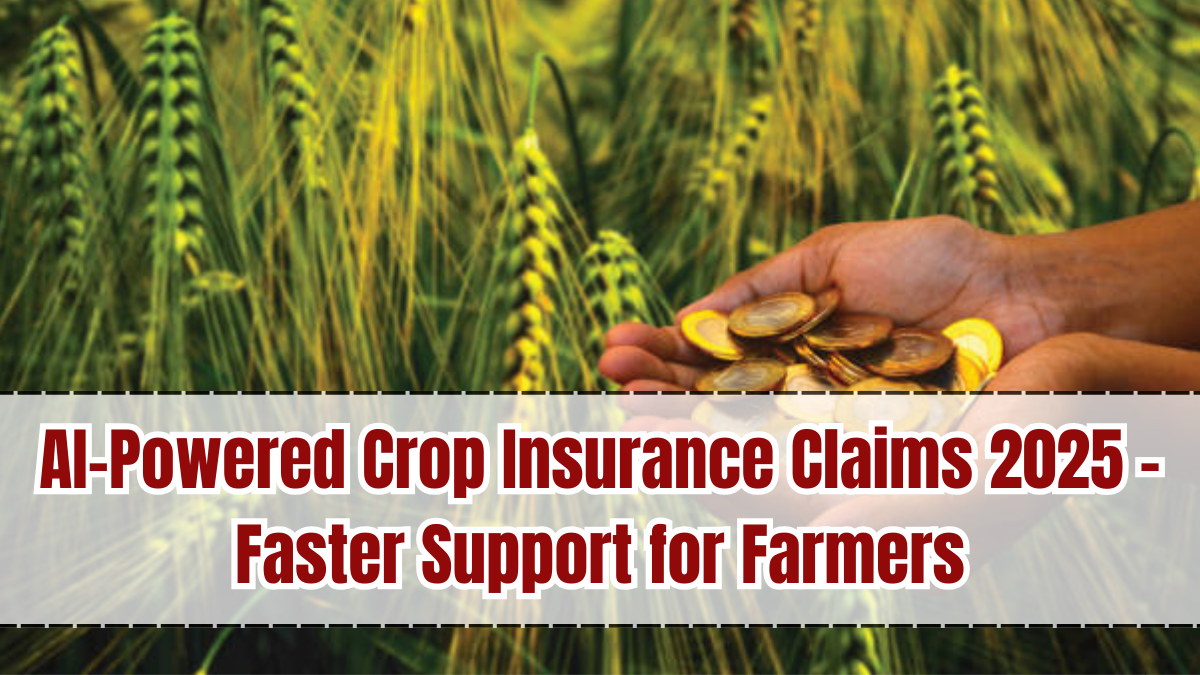For farmers, crops are not just produce but their primary source of livelihood. Natural disasters, unpredictable weather, and pests often damage harvests, leaving farmers financially vulnerable. Traditionally, filing and processing crop insurance claims was slow, bureaucratic, and prone to errors. In 2025, AI-Powered Crop Insurance Claims are transforming the sector by making settlements faster, more accurate, and farmer-friendly. This innovation is ensuring timely financial relief and greater trust in agricultural insurance.

What are AI-Powered Crop Insurance Claims?
AI-powered crop insurance claims use artificial intelligence to automate and optimize the claim process. Instead of manual inspections and paperwork, AI analyzes data from satellite images, drones, weather stations, and IoT sensors to assess crop damage.
Key features include:
-
Automated claim filing through mobile apps.
-
AI-based damage assessment using real-time data.
-
Fraud detection to prevent false claims.
-
Faster approval and payout processes.
-
Integration with digital payment systems for direct compensation.
Why They Matter in 2025
The importance of AI-Powered Crop Insurance Claims 2025 lies in their ability to provide financial support when farmers need it most. In traditional systems, claims could take months, leaving farmers in debt or forcing them to abandon farming. With AI, claims are processed within days, helping farmers recover quickly. This efficiency is critical in regions where climate change has made agriculture more unpredictable and risky.
Benefits of AI-Powered Crop Insurance
AI is bringing multiple benefits to crop insurance systems:
-
Speed: Claims are settled within days instead of months.
-
Accuracy: AI minimizes human error in damage assessment.
-
Transparency: Farmers can track their claims in real time.
-
Financial Security: Ensures timely payouts to sustain farming operations.
-
Trust Building: Increases farmer confidence in insurance schemes.
These benefits make agricultural insurance more effective and accessible.
Role of Technology
Technology is the backbone of modern crop insurance. AI and machine learning models analyze satellite and drone imagery to detect crop health and estimate losses. IoT sensors monitor soil moisture, temperature, and rainfall, providing additional data. Mobile applications simplify the claim process by allowing farmers to upload pictures and receive instant claim updates. Blockchain technology is being tested to create tamper-proof insurance records, ensuring fairness and security.
Government and Industry Initiatives
Governments are actively promoting AI-based crop insurance to protect farmers against climate risks. Subsidized premium schemes are now integrated with AI systems to ensure quick settlements. Insurance companies are collaborating with agri-tech startups to build user-friendly platforms that reach even remote villages. International organizations like the World Bank are funding AI insurance projects to safeguard food security globally.
Future of AI in Crop Insurance
By 2030, crop insurance will become even more predictive and farmer-focused. AI will use climate models to forecast risks and adjust policies dynamically. Farmers will receive personalized insurance packages tailored to their region, crop type, and weather conditions. Fully automated claim systems will ensure zero delays, while smart contracts on blockchain will guarantee instant payouts without human intervention.
Conclusion
AI-Powered Crop Insurance Claims 2025 are reshaping agricultural finance by making insurance faster, smarter, and more reliable. By combining AI with real-time data, farmers receive timely support that sustains their livelihoods in the face of uncertainty. As technology evolves, crop insurance will become not just a safety net but a proactive tool for resilience, empowering farmers worldwide to face future challenges with confidence.
FAQs
What are AI-Powered Crop Insurance Claims 2025?
They are insurance systems that use AI and real-time data to process crop damage claims quickly and accurately.
How do they help farmers?
They provide faster payouts, reduce delays, and offer financial security during crop failures.
What technologies are used?
Satellite imagery, drones, IoT sensors, AI algorithms, mobile apps, and blockchain for transparent records.
Are these systems available to small farmers?
Yes, governments and startups are ensuring accessibility through mobile platforms and subsidies.
What is the future of AI crop insurance?
Future systems will use predictive AI, smart contracts, and blockchain for instant, automated payouts.
Click here to know more.
